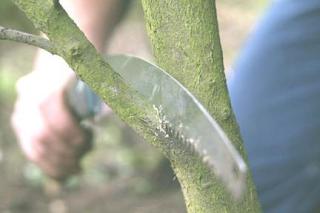Tree Pruning

"Training young trees provides the greatest benefit of any cultural practice in influencing the future structure, appearance, and maintenance costs of landscape trees." (Harris et al. 1999)
Each tree planted through the Street Tree Planting Program is evaluated by Urban Forestry staff three years after planting and pruned for structure and form. Pruning trees when they are young improves the health and strength of the tree, reduces future maintenance costs and increases the longevity of the tree.
Keep these few simple principles in mind before pruning a tree:
- Each cut has the potential to change the growth of the tree. Always have a purpose in mind before making a cut. Proper technique is essential.
- Poor pruning can cause damage that lasts for the life of the tree. Learn where and how to make the cuts before picking up the pruning shears.
- Trees do not heal the way people do. When a tree is wounded, it must grow over and compartmentalize the wound. As a result, the wound is contained within the tree forever. Small cuts do less damage to the tree than large cuts.
- For that reason, proper pruning (training) of young trees is critical. Waiting to prune a tree until it is mature can create the need for large cuts that the tree cannot easily close.
Mature trees must be pruned to provide visibility and clearance for pedestrians and vehicles. It is the responsibility of the homeowner to maintain trees in the City right-of-way.
Tree services working within the City limits must be licensed with the City. This ensures that contractors providing tree services have liability insurance, a current contractors license, and are familiar with City Ordinances regarding tree care. Tree Services
The USDA Forest Service has published an excellent How To Prune Trees guide. How to Prune Trees
For more information about pruning trees contact the City of La Grande Urban Forestry Division at (541) 663-1952, or by email.
